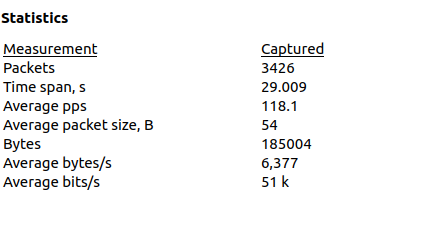An ACK-RST-FIN flood is a DDoS attack designed to disrupt network activity by saturating bandwidth and resources on stateful devices in its path.
By continuously sending ACK-RST-FIN packets towards a target, stateful defenses can go down (In some cases into a fail open mode). This flood could also be used as a smoke screen for more advanced attacks. This is true for other out of state floods too.
ACK-RST-FIN Packets are considered an illegal packet by the Original TCP RFC. While it left room for customized behavior it is virtually unused today. Thus different systems can react differently to these packets and may cause unexpected issues and behavior.
Technical Analysis
Below an analysis of an ACK-RST-FIN flood is shown. The following images depict a high rate of ACK-RST-FIN packets being sent from a single source IP towards a single destination IP.
In Image 1 below, you can see the flood of ACK-RST-FIN packets coming from a single source. Notice the rate at which the packets are sent.
“Image 1 – example of single ACK-RST-FIN packet being sent to port 80”
As seen in Image 2 the capture analyzed is 29 seconds long and the average number of packets per second are at 118, with a rate of around 51Kbps. Attack rates could be much higher.
“Image 2 – ACK-RST-FIN Flood stats”
A typical ACK-RST-FIN flood running against an unsuspecting host will look similar to the above analysis. Generally what is seen is a high rate of ACK-RST-FIN packets (not preceded by a TCP handshake).
Analysis of an ACK-RST-FIN flood in Wireshark – Filters
Filter ACK-RST-FIN packets – “tcp.flags.ack && tcp.flags.reset && tcp.flags.fin”.
Goto Statistics -> Summary on the menu bar to understand the rate you are looking at.
Download Example PCAP of ACK-RST-FIN Flood
*Note: IP’s have been randomized to ensure privacy.


